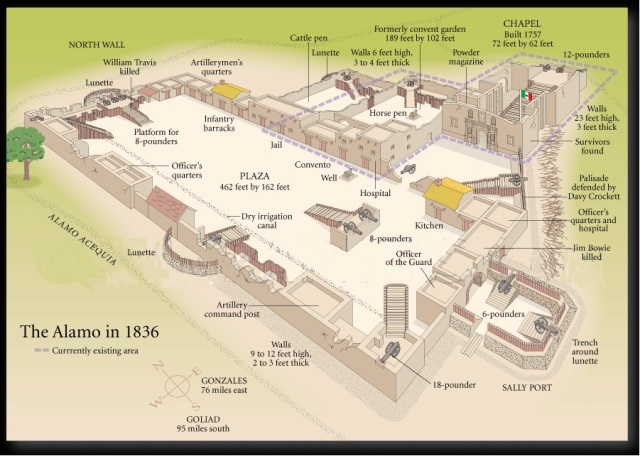Today in Texas History -- February 23rd
There are some other things to read about -- I guess!!
Marines raise flag on Iwo Jima
On this day in 1945, Cpl. Harlon Block of Weslaco appeared in one of the most indelible images to come out of World War II. For three days the men of Company E, Second Battalion, Twenty-eighth Marines, had fought their way to the top of Mount Suribachi, a 550-foot-high extinct volcano at the southern end of the island of Iwo Jima. They first raised a small flag to signal their victory to their fellows below, and a larger flag later. In Associated Press photographer Joe Rosenthal's picture of the six men raising this second flag, which won the Pulitzer Prize, the twenty-year-old Block was the stooping figure guiding the base of the flagpole into the volcanic ash. He never saw the famous picture, however, as he was killed in action on March 1 as his unit advanced in the direction of Mishi Ridge. Block was buried in the Fifth Marine Division cemetery at the foot of Mount Suribachi, though his body was taken home to Weslaco in 1949.
Legislature establishes Gillespie County
On this day in 1848, the Texas legislature formally marked off Gillespie County from Bexar and Travis counties. The first known residents of Gillespie County, in west central Texas, were the Tonkawa Indians. By the nineteenth century, Comanches and Kiowas had also moved into the area. The future county was first settled by Europeans in 1846, when John O. Meusebach led a group of 120 Germans sponsored by the Adelsverein to the site of Fredericksburg, which became one in a series of German communities between the Texas coast and the Fisher-Miller Land Grant. Fredericksburg and the surrounding rural areas grew quickly, and in December 1847, 150 settlers petitioned the legislature to establish a new county, which they suggested be named either Pierdenales or Germania. Instead, the legislature named it after Capt. Robert A. Gillespie, a hero of the recent Mexican War, and made Fredericksburg the county seat. Gillespie County originally included areas that today are parts of Blanco, Burnet, Llano, and Mason counties. The people of Gillespie County have always been proud of their German heritage and pioneer history. In 1896 Robert G. Penniger wrote a book in German marking the fiftieth anniversary of the founding of Fredericksburg and, with it, Gillespie County. The people of Gillespie County marked this occasion with a gala celebration at which the fifty-five surviving original settlers were honored.
Secession referendum passes by landslide
On this day in 1861, the people of Texas went to the polls to vote on a referendum to secede from the Union. The vote was 46,153 for secession and 14,747 against. Of the 122 counties casting votes, only eighteen cast majorities against secession. Only eleven others cast as much as 40 percent against. The referendum was held pursuant to a decision in favor of secession in the state Secession Convention.
There are some other things to read about -- I guess!!
Marines raise flag on Iwo Jima
On this day in 1945, Cpl. Harlon Block of Weslaco appeared in one of the most indelible images to come out of World War II. For three days the men of Company E, Second Battalion, Twenty-eighth Marines, had fought their way to the top of Mount Suribachi, a 550-foot-high extinct volcano at the southern end of the island of Iwo Jima. They first raised a small flag to signal their victory to their fellows below, and a larger flag later. In Associated Press photographer Joe Rosenthal's picture of the six men raising this second flag, which won the Pulitzer Prize, the twenty-year-old Block was the stooping figure guiding the base of the flagpole into the volcanic ash. He never saw the famous picture, however, as he was killed in action on March 1 as his unit advanced in the direction of Mishi Ridge. Block was buried in the Fifth Marine Division cemetery at the foot of Mount Suribachi, though his body was taken home to Weslaco in 1949.
Legislature establishes Gillespie County
On this day in 1848, the Texas legislature formally marked off Gillespie County from Bexar and Travis counties. The first known residents of Gillespie County, in west central Texas, were the Tonkawa Indians. By the nineteenth century, Comanches and Kiowas had also moved into the area. The future county was first settled by Europeans in 1846, when John O. Meusebach led a group of 120 Germans sponsored by the Adelsverein to the site of Fredericksburg, which became one in a series of German communities between the Texas coast and the Fisher-Miller Land Grant. Fredericksburg and the surrounding rural areas grew quickly, and in December 1847, 150 settlers petitioned the legislature to establish a new county, which they suggested be named either Pierdenales or Germania. Instead, the legislature named it after Capt. Robert A. Gillespie, a hero of the recent Mexican War, and made Fredericksburg the county seat. Gillespie County originally included areas that today are parts of Blanco, Burnet, Llano, and Mason counties. The people of Gillespie County have always been proud of their German heritage and pioneer history. In 1896 Robert G. Penniger wrote a book in German marking the fiftieth anniversary of the founding of Fredericksburg and, with it, Gillespie County. The people of Gillespie County marked this occasion with a gala celebration at which the fifty-five surviving original settlers were honored.
Secession referendum passes by landslide
On this day in 1861, the people of Texas went to the polls to vote on a referendum to secede from the Union. The vote was 46,153 for secession and 14,747 against. Of the 122 counties casting votes, only eighteen cast majorities against secession. Only eleven others cast as much as 40 percent against. The referendum was held pursuant to a decision in favor of secession in the state Secession Convention.




